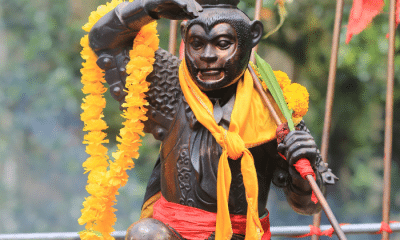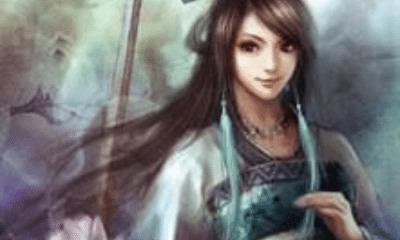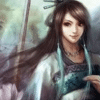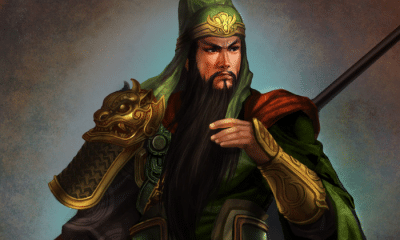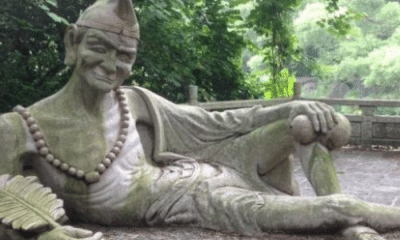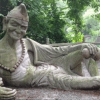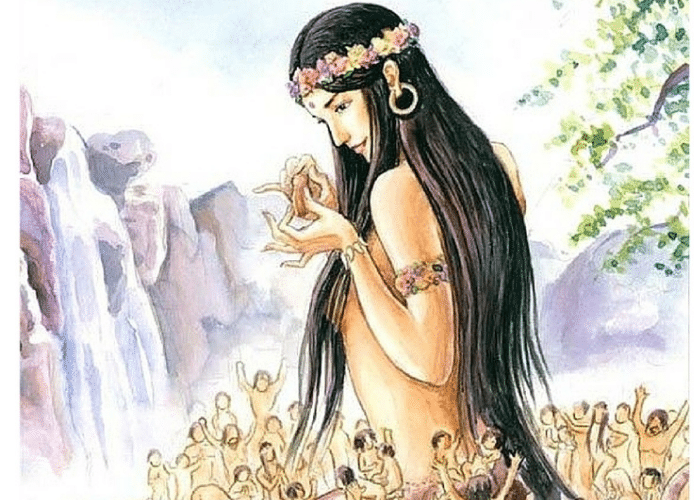
Chinese
Who is the Chinese Goddess Nuwa?
Who is the Chinese Goddess Nuwa?
In Chinese mythology, humanity was created by a goddess named Nuwa. Giving life to mankind was only the beginning of her amazing story, though!
Most cultures have a mother goddess of some type. These are benevolent female figures who create people, ensure their continued reproduction, and protect them from harm.
In China, this goddess was Nuwa. Also Anglicized as Nu Wa, Nu Kwa, or Nugua, she made the first humans to cure the loneliness of being among the first deities.
Nuwa was also the goddess of marriage. Her union was the first of its kind and set the precedent for such ceremonies among the Chinese people.
Nuwa’s story was more than just a wife and mother, however. She was also the inventive and beautiful goddess who saved the world from catastrophe after ruling as a queen.
Nuwa and the Creation of Mankind
According to legend, Nuwa created humanity because she was incredibly lonely.
She gathered clay and shaped figures in the shape of the gods. She made the first people out of rich yellow clay and carefully molded them by hand.
This method was time-consuming and tiring, however, and Nuwa wished for many more people to keep her company. To speed up their creation she began to drag a string across a pool of mud to mass-produce human forms.
Nuwa gave her new people life, but she was still lonely. Because even making people from mud took a great deal of energy, she gave them the ability to reproduce on their own so she could have more companions without having to make them herself.
Humans soon spread to cover the earth, but the effects of Huwa’s creation were always visible.
The men made of clay, who she had taken great care with, were the ancestors of the nobility. The more numerous but lower-quality people created from the mud were the peasants.
The Empress
Chinese culture was typically said to have begun in the third millennium BC, shortly after the Earth and humanity were first created.
Tradition said that the land was first ruled by Three Sovereigns and then by Five Emperors. These people can be identified as either heroes or gods who had extraordinarily long and reigns.
While the myths of the Three Sovereigns and Five Emperors are widely-known in Chinese culture their exact identifications are more elusive. At least eleven figures are named in various sources as being one of the Three Sovereigns.
Nuwa is one of these. A female ruler was rare in the ancient world and her legend reflects that.
She took the throne after her brother Fuxi left Earth. As the second of the Three Sovereigns, she helped to set the standard for Chinese rule.
She was not unopposed, however. A tribal chief challenged her authority, forcing her to go to war.
Nuwa defeated the challenger and took him to the top of a mountain. His shame at being beaten by a woman, however, meant that he refused to surrender peacefully.
Believing it was better to die than live with such shame, the chief banged his head against the Heavenly Bamboo that grew on the mountain. This act tore a hole in the heavens and brought a great flood to the land.
Nuwa’s Marriage
Fuxi was not only Nuwa’s brother and predecessor as the king. He was also her husband.
The two were children of the Jade Emperor and lived by themselves before any other men or gods were created. It was this lonely existence that led Nuwa to eventually create mankind.
Although they were brother and sister, Nuwa and Fuxi began to develop feelings for one another. Fearing that such an attraction would not be allowed, they asked for a sign to determine whether or not they would be allowed to marry.
Long ago, when the world first began, there were two people, Nü Kua (Nuwa) and her older brother. They lived on Mount K‘un-lun. And there were not yet any ordinary people in the world. They talked about becoming husband and wife, but they felt ashamed. So the brother at once went with his sister up Mount K’un-lun and made this prayer: “Oh Heaven, if Thou wouldst send us two forth as man and wife, then make all the misty vapor gather. If not, then make all the misty vapor disperse.” At this, the misty vapor immediately gathered.
-Li Rong, Duyi Zhi (trans Birrell)
Nuwa’s marriage to her brother was permitted because they were among the only beings in creation. They still felt shame, however.
They wove grass to hold in front of themselves, hiding their faces so no one could see the shame associated with their marriage. Holding a fan in such a manner became a tradition for Chinese brides.
Nuwa and Fuxi’s marriage was the first of its kind in Chinese history. It not only established Nuwa as the goddess of marriage and brides, but also set the precedence that marriages were arranged by divine decree rather than personal preference.
The Reparation of the Heavens
Nuwa’s most well-known story, however, involves the way in which she repaired the heavens.
In this story, the heavens were damaged in some way. Nuwa mended them and, in doing so, saved the world.
There are many legends that describe this event. They give various reasons for the damage.
These include:
- In one story, the tribal leader who challenged Nuwa’s sovereignty tore a hole in the heavens by banging on Heavenly Bamboo. The resulting flood killed most of humanity.
- In another, the heavens were originally formed imperfectly. This imperfection grew more pronounced until Nuwa fixed it.
- One story claimed that the four pillars that supported the heavens were somehow broken. This caused chaos including floors, fires, and particularly ferocious animals.
- Two accounts claim the pillars were broken by fights between either the gods or demons.
In some stories, the damage to the heavens created a permanent record on Earth.
Part of the sky fell and cracked the land. This caused the Earth to tilt so the western part of China was higher than the east and rivers flowed mostly to the southeast.
Whatever the reason for the damage, the stories generally agree on how Nuwa fixed it.
She gathered five stones of different colors from a riverbank. She used the red, yellow, green, black, and white stones to patch the hole in the heavens.
One traditional interpretation of this is that Nuwa created the subtle color changes sometimes seen in the clouds. The same colors also have a religious significance, however.
These are the colors associated with the five aspects of the Supreme God in Chinese culture. They also correspond to the dragons that represented the elements.
Nuwa also killed a giant tortoise, sometimes called Ao, and cut off its legs. She used these to create new pillars to put the heavens back in their proper place.
In some stories, however, this did not perfectly restore the heavens. They were eternally tilted because one leg was a slightly different length than the others.
Nuwa then undid the damage that had been done by the imbalance of the heavens and the Earth. She doused fires, used the ashes to dry up floodwaters, and drove away the wild beasts and predatory birds that had threatened humanity.
Many cultures have a flood myth, but China’s is somewhat unique in that the goes into more detail to say how the flood was abated than how it was caused in the first place.
Nuwa and the Shang King
One story, however, connects Nuwa and her multicolored stones in a different way.
In a novel from the 16th century, Nuwa uses stones of five colors to give gifts to the Shang Dynasty, a semi-mythical culture from prehistoric China.
The stones, as symbols of the elements, gave the dynasty light seasonal rain and control over the other elements.
To thank her, King Zhou was invited to meet with Nuwa. She sat behind a curtain but was lit from behind so that he could make out her shape.
Although she was largely obscured, King Zhou was overcome with lust for the beautiful goddess. He composed an erotic poem and wrote it on a wall in one of her sacred temples.
When the goddess discovered this poem, she was infuriated. The king’s words were disgusting and disrespectful.
Nuwa vowed that the Shang Dynasty would end as a result of the king’s disrespect. She personally went to the palace to kill him, but was pushed back by beams of red light.
King Zhou was destined to rule for another twenty-six years, and even a goddess as powerful of Nuwa could not override fate. She would not be able to kill the king immediately, but she quickly realized that she could punish him in other ways.
She summoned three spirits who served her – the Thousand Year Vixen, the Nine Headed Pheasant, and the Jade Pipa. She told them to cause as much chaos as they could without harming anyone but the king.
The mortal forms of these three spirits would be revealed and killed one by one, but over the years they still damaged both the king’s reputation and morale in the court. Nuwa could not directly destroy the king, but she still had a hand in the downfall of the Shang Dynasty.
The Invention of Music
Nuwa was revered as a creator and protector, but in some legends she was also an inventor.
Specifically, Nuwa was said to have created at least three types of flutes. The Shenghuang, Saengwhang, and Halusi flutes were all traditional instruments from different regions that were made of reeds, gourds, and bamboo pipes.
The Shenghuang was closely associated with Nuwa’s dominion over marriage and creation. It was traditionally played during marriage and fertility rituals.
The sheng is one of the oldest instruments in China and came to be used in many types of musical performances. While it was traditionally linked to marriage rites, it became one of the most iconic instruments in many types of composition, including opera.
Despite her link to these instruments, Nuwa was not specifically revered as a goddess of music or performance. The god of music was Bonghwang, whose shape was said to have inspired the Korean version of the sheng, the Saengwhang.
Her inventions, however, still led to Nuwa being recognized in the arts. The decor of Chinese theaters often includes images of Nuwa.
The Mother Goddess Nuwa
In Chinese mythology, Nuwa was revered as a mother goddess.
She created mankind by forming their bodies from clay and mud and giving them life. The qualities in the first men she made set the foundation for China’s social stratification.
Nuwa also had the first marriage. While her marriage to her brother violated the taboos of human culture, it also established traditions that would last for many centuries.
Nuwa’s cult was therefore centered around her role as a wife and mother, but different legends showed a much broader background than this.
In one, she relentlessly punished a human emperor who offended her. In another, she invented the flutes that were used in both marriage ceremonies and classical compositions. One story even claimed that she ruled as one of China’s first sovereigns.
Most famous, however, was the story of how Nuwa repaired the heavens. China’s flood myth was caused by damage to the sky, which Nuwa fixed with multicolored stones and the body of a giant tortoise.


